To measure PR success, focus on aligning your goals with your business objectives. Start by defining clear, measurable targets like brand awareness, audience engagement, and sentiment analysis. Track essential metrics such as media impressions, mentions, and engagement rates across platforms. Utilize tools like Google Analytics to assess traffic and media monitoring software for comprehensive coverage analysis. Regularly evaluate your progress through structured reporting, highlighting key insights and areas for improvement. This systematic approach will enhance your strategies and demonstrate the effectiveness of your PR campaigns. There’s more to explore to refine your measurement techniques further.
Understanding PR Success Metrics

Understanding PR success metrics is crucial for you to gauge the effectiveness of your campaigns.
By clearly defining your goals and the key concepts behind them, you can measure progress and make informed decisions.
This approach not only enhances your strategic communication efforts but also helps you achieve tangible results.
Implementing effective metrics, such as key PR metrics, ensures that your strategies align with organizational objectives and drives continuous improvement.
The Importance of Measuring PR Success
Measuring PR success is essential for any business looking to evaluate the effectiveness of their public relations efforts. By tracking the right PR metrics, you can understand the impact of PR on your brand’s visibility and reputation. This measurement not only helps you gauge the success of a PR campaign but also demonstrates the return on investment (ROI) to stakeholders.
When you measure PR success, you’re aligning your public relations activities with broader business objectives. This alignment ensures that your campaigns resonate with your target audience and achieve desired outcomes. By setting clear, measurable goals before launching a campaign, you can continuously evaluate progress and make necessary adjustments.
Furthermore, effective public relations measurement allows you to refine future campaigns based on data-driven insights. You’ll identify what strategies work best, enabling you to allocate resources more effectively.
In a competitive landscape, understanding the success of your PR efforts is crucial for maintaining a strong brand presence. With the right approach, you can leverage PR metrics to enhance your overall marketing strategy and achieve greater impact.
Defining PR Success: Key Concepts and Goals
To effectively define PR success, you need to establish clear, measurable goals that align with your brand’s objectives. This will help you measure public relations success and assess the impact of PR campaigns accurately.
Here are three key concepts to consider:
- Brand Awareness: Track how well your audience recognizes your brand through surveys and media mentions. This metric shows how effectively your messages resonate.
- Audience Engagement: Monitor metrics like click-through rates and social media interactions to gauge how actively your audience engages with your content. High engagement indicates a successful PR strategy.
- Reputation Management: Use sentiment analysis to measure public perception of your brand. Regularly evaluate reputation metrics to ensure they align with your overarching business goals.
Setting the Right PR Goals

When setting PR goals, it’s crucial to align them with your overall business objectives to ensure every effort contributes to your organization’s success.
Establishing clear PR goals enhances brand visibility and ensures that your PR strategies reflect unique organizational needs.
Consider the customer journey as a guide to tailor your goals, focusing on what matters most to your audience at each stage.
This approach not only clarifies your targets but also enhances the effectiveness of your PR strategies.
Aligning PR Goals with Business Objectives
Aligning your public relations goals with broader business objectives is crucial for achieving meaningful results. When your PR strategy complements your company’s aims—like increasing market share or enhancing public perception—you can better measure the impact of public relations efforts.
Here are three steps to ensure your PR goals align with business objectives:
- Define Clear Objectives: Identify what your business wants to achieve. This could be driving website traffic, improving brand reputation, or expanding target audience reach.
- Set Measurable Goals: Establish specific, quantifiable goals to track progress. For instance, aim for a specific percentage increase in website visits as a result of your PR initiatives.
- Monitor and Adjust: Regularly evaluate your PR effectiveness through metrics like media coverage and audience engagement. This will help you determine the effectiveness of your campaigns and make necessary adjustments.
Using the Customer Journey to Guide PR Goals
Understanding the customer journey is essential for setting effective PR goals that resonate with your audience. By mapping out the stages—awareness, interest, decision, and action—you can tailor your PR efforts to meet specific objectives at each phase.
For instance, during the awareness stage, your goal might be to enhance brand visibility through media coverage and impressions. Here, you can measure PR efforts by tracking media mentions and using metrics for measuring a PR campaign’s effectiveness.
As potential customers move to the interest stage, focus on generating engagement through targeted messaging and content that fosters connection. At this point, analyzing click-through rates and website traffic can reveal how well your PR campaign’s success aligns with customer actions.
When customers reach the decision stage, your goals should shift towards conversion. Monitoring sales metrics and direct website traffic helps you assess public relations effectiveness in driving purchases.
Essential PR Metrics to Track

When measuring PR success, you’ll want to focus on essential metrics that truly reflect your impact.
Start by tracking media impressions and mentions, as well as engagement metrics across social media. Utilizing tools like Google Analytics can help you evaluate the traffic generated from your PR activities.
Additionally, analyzing earned media value and sentiment can provide valuable insights into your brand’s presence and perception.
Media Impressions and Media Mentions
Media impressions and media mentions serve as vital indicators of your PR efforts’ reach and visibility. By tracking these metrics, you can better understand how effectively your messaging resonates with your audience.
Here’s what you should focus on:
- Media Impressions: This metric reflects the total number of times your content is displayed across various media outlets. High impressions indicate your message is reaching a broad audience, enhancing brand awareness.
- Media Mentions: These refer to instances where your brand is referenced in articles, blogs, and other platforms. Increased media mentions often correlate with positive brand perception and higher engagement.
- Reporting and Analysis: Regularly analyze both metrics to gauge the effectiveness of your campaigns. Look for trends over time to adjust your strategies accordingly.
Engagement Metrics: Social Media and Beyond
Engagement metrics play a pivotal role in gauging how audiences interact with your brand across social media and other platforms. By tracking social media interactions such as likes, shares, and comments, you can measure engagement and understand what resonates with your audience. These metrics help you assess the effectiveness of your PR campaign’s success and refine your strategies accordingly.
When you analyze engagement metrics, consider not only the quantity but also the quality of interactions. High levels of audience engagement indicate that your content is compelling and relevant, fostering a connection with your target demographic.
Keep an eye on trends in social media interactions to adjust your messaging and tactics in real-time. Additionally, track engagement across different platforms to identify which channels deliver the best results. This insight will enable you to allocate resources effectively and optimize your PR efforts.
Measuring Earned Media Value (EMV)
Measuring Earned Media Value (EMV) is crucial for understanding the financial impact of your PR activities, as it quantifies the value generated from media coverage that you didn’t pay for directly.
By calculating EMV, you can effectively measure a PR campaign’s success and demonstrate its true worth to stakeholders.
Here are three key components to consider when measuring EMV:
- Media Impressions: Track how many people were exposed to your coverage. This gives you insight into your message’s reach and potential engagement.
- Advertising Value Equivalency (AVE): Estimate how much it would cost to achieve the same media coverage through paid advertising, providing a tangible PR value.
- Audience Engagement: Measure interactions, shares, and comments that stem from your media mentions. This reflects the impact of public relations on audience perception and behavior.
Analyzing Sentiment and Share of Voice
Understanding sentiment and share of voice (SoV) is essential for any PR professional looking to gauge public perception and brand presence. By conducting sentiment analysis, you can measure how audiences feel about your brand, whether it’s positive, negative, or neutral. This insight helps you understand the emotional connection consumers have with your company, which is crucial for refining your messaging.
On the other hand, SoV compares your brand presence against competitors in the media landscape. It tracks the volume of mentions your brand receives relative to others, allowing you to assess your visibility and influence. High SoV indicates a strong presence, suggesting your PR efforts are resonating with audiences.
To measure PR campaign’s success effectively, you should regularly analyze both sentiment and SoV metrics. These insights not only reveal how your brand is perceived but also highlight areas for improvement.
Tools and Techniques for PR Measurement

When it comes to measuring PR success, using the right tools and techniques is crucial.
Media monitoring software can help you track your campaign’s performance, while Google Analytics provides insights into website traffic trends.
Don’t forget to gather qualitative data through surveys and focus groups to understand audience sentiment better.
Media Monitoring Tools and Software
Media monitoring tools and software play a crucial role in evaluating the effectiveness of your PR campaigns by tracking media coverage and brand mentions across various platforms.
Utilizing these tools can provide you with valuable insights into the results of your PR campaigns, helping you refine your strategies.
Here are three essential media monitoring tools to consider:
- Google Alerts: This free tool notifies you about new mentions of your brand, helping you stay updated on press clippings and media coverage.
- CoverageBook: This tool allows you to compile your media coverage easily, showcasing the number of press clippings and their impact on your brand’s visibility.
- Cision: A comprehensive media monitoring tool that tracks mentions across various channels, offering detailed insights into the effectiveness of your campaigns.
Analyzing Website Traffic with Google Analytics
Google Analytics is a powerful tool for tracking how PR efforts influence your website traffic. By analyzing traffic patterns, you can effectively measure your PR campaign’s success.
Start by setting up custom URLs for your press releases and campaigns; this allows you to track specific sources of web traffic. When you notice an increase in web traffic after a release, you can correlate that spike with your PR activities.
Key metrics for measuring your campaign’s effectiveness include direct traffic, organic search increases, and referral traffic from media outlets. Regularly monitor these metrics to understand which initiatives drive the most engagement.
Additionally, evaluate goal completions linked to traffic upticks to gauge real impact. Don’t forget to keep an eye on conversion rates as well; a surge in web traffic is great, but it’s even better if it leads to sales or sign-ups.
Using Surveys and Focus Groups for Sentiment Analysis
Surveys and focus groups are essential tools for gauging public sentiment before and after PR campaigns. By engaging directly with your audience, you can gather valuable insights that help you measure your campaign’s success and refine your strategies.
Here are three effective ways to utilize these tools:
- Surveys: Create structured questionnaires to assess brand awareness and gauge opinions on your messaging. Use a mix of quantitative and qualitative questions to capture a comprehensive view of public sentiment.
- Focus Groups: Conduct focus group discussions to delve deeper into how people perceive your brand. This allows for open dialogue, providing rich qualitative data that surveys might miss.
- Pre- and Post-Campaign Analysis: Use surveys and focus groups both before and after your PR efforts. This will help you track changes in public sentiment and evaluate the effectiveness of your messaging.
Reporting and Analyzing PR Success

When it comes to reporting and analyzing your PR success, creating comprehensive reports is key to understanding your campaign’s impact.
You’ll want to leverage data-driven insights to identify areas for continuous improvement.
Creating Comprehensive PR Reports
To create effective PR reports, it’s essential to structure them in a way that clearly communicates your campaign’s performance and insights. This helps you measure a PR campaign’s success and determine its worth.
Start with a solid outline and include the following elements:
- Metrics and KPIs: Clearly define which metrics and KPIs you’re using to evaluate success. This might include impressions, website traffic, or media mentions.
- Goal Assessment: Review the goals you set at the beginning of the campaign. Did you achieve them? Use data to help you identify areas of success and those needing improvement.
- Visual Data Representation: Incorporate charts and graphs to make data digestible. Visuals can effectively highlight trends and patterns, making it easier for stakeholders to understand the report.
Continuous Improvement Through Data-Driven Insights
Effective PR reporting doesn’t stop with presenting results; it’s a gateway to ongoing enhancement of your strategies. To truly measure PR campaign success, you need to leverage data-driven insights that inform your next steps.
Start by analyzing the metrics that reflect your PR impact, such as media coverage, audience engagement, and message pull-through. By measuring a PR campaign’s effectiveness through these indicators, you can identify what resonates with your target audience.
Continuous improvement hinges on this analysis. Look for trends in consumer awareness and goal completion indicators to refine your approach.
For instance, if you notice a spike in web traffic following a specific press release, double down on that strategy. Utilize tools like Google Analytics to dig deeper into traffic sources and conversions, ensuring your efforts align with business objectives.
Conclusion
Measuring PR success isn’t just about numbers; it’s about understanding your impact. By setting clear goals and tracking essential metrics, you can fine-tune your strategies and enhance your brand’s visibility. Utilize the right tools to gather insights, and don’t forget to analyze your results regularly. With these practices in place, you’ll not only demonstrate your PR efforts’ effectiveness but also ensure they align with your overall business objectives. Start measuring today to elevate your PR game!


